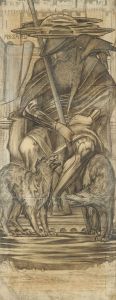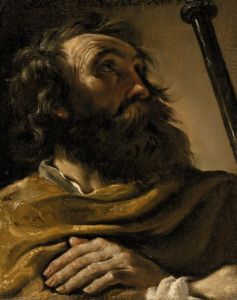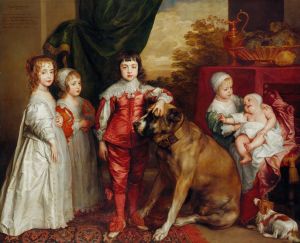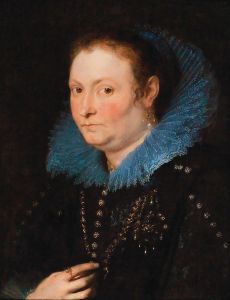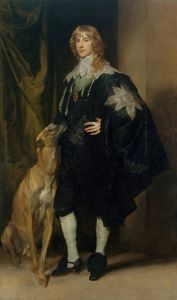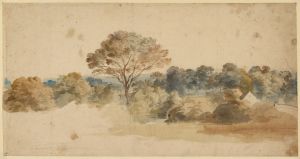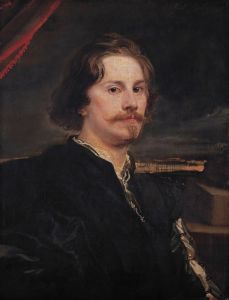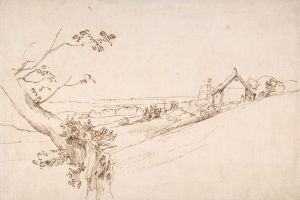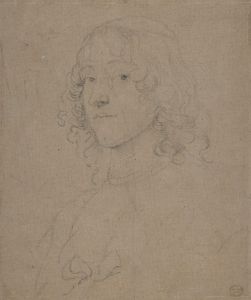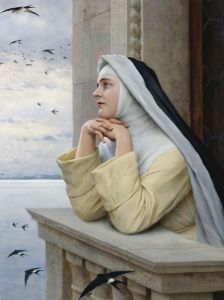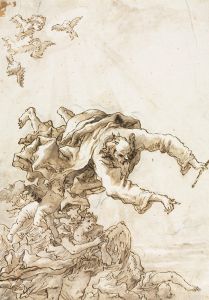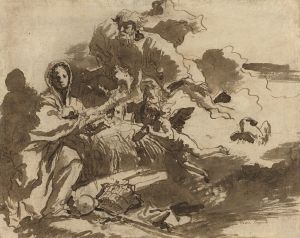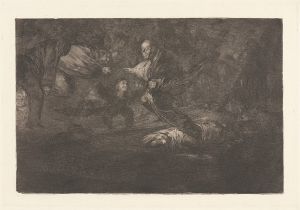
Mercury
A hand-painted replica of Anthony van Dyck’s masterpiece Mercury, meticulously crafted by professional artists to capture the true essence of the original. Each piece is created with museum-quality canvas and rare mineral pigments, carefully painted by experienced artists with delicate brushstrokes and rich, layered colors to perfectly recreate the texture of the original artwork. Unlike machine-printed reproductions, this hand-painted version brings the painting to life, infused with the artist’s emotions and skill in every stroke. Whether for personal collection or home decoration, it instantly elevates the artistic atmosphere of any space.
Anthony van Dyck, a prominent Flemish Baroque artist, is renowned for his portraits and religious works. However, his mythological paintings, though less frequently discussed, also hold significant artistic value. One such work is "Mercury," which exemplifies van Dyck's skill in capturing the dynamism and elegance of mythological figures.
"Mercury" is a painting that depicts the Roman god Mercury, known as Hermes in Greek mythology. Mercury is traditionally recognized as the messenger of the gods, as well as the god of commerce, communication, and travelers. In art, he is often portrayed with his characteristic attributes: a winged helmet, winged sandals, and a caduceus, which is a staff entwined with two serpents.
Van Dyck's depiction of Mercury showcases his mastery in rendering the human form with grace and movement. The painting likely captures Mercury in a moment of action, emphasizing his role as a swift messenger. Van Dyck's use of light and shadow, a hallmark of Baroque art, adds a dramatic effect to the composition, highlighting Mercury's muscular form and the flowing drapery that accompanies his movement.
The painting reflects van Dyck's exposure to the works of other great artists of his time, including Peter Paul Rubens, with whom he worked closely. Rubens' influence is evident in van Dyck's dynamic composition and the robust, energetic portrayal of mythological subjects. Van Dyck's time in Italy also contributed to his development as an artist, where he studied the works of the Italian masters, further refining his style and technique.
While specific details about the commission or the exact date of "Mercury" are not well-documented, it is known that van Dyck created several mythological paintings throughout his career. These works were often commissioned by wealthy patrons who desired classical themes for their collections, reflecting the cultural and intellectual interests of the Baroque period.
Van Dyck's "Mercury" is a testament to his versatility as an artist, capable of capturing not only the likeness of his portrait subjects but also the idealized forms of mythological figures. His ability to convey movement and emotion through his brushwork and composition is evident in this work, making it a valuable piece within his oeuvre.
The painting contributes to the broader understanding of Baroque art, where mythological themes were used to explore human emotion, divine intervention, and the complexities of the human experience. Van Dyck's interpretation of Mercury aligns with these themes, offering a glimpse into the artistic and cultural milieu of the 17th century.
In summary, Anthony van Dyck's "Mercury" is an exemplary work that highlights the artist's skill in depicting mythological subjects with dynamism and elegance. Although not as widely recognized as his portraits, this painting remains an important part of van Dyck's artistic legacy, illustrating his ability to blend classical themes with the dramatic flair characteristic of the Baroque era.





